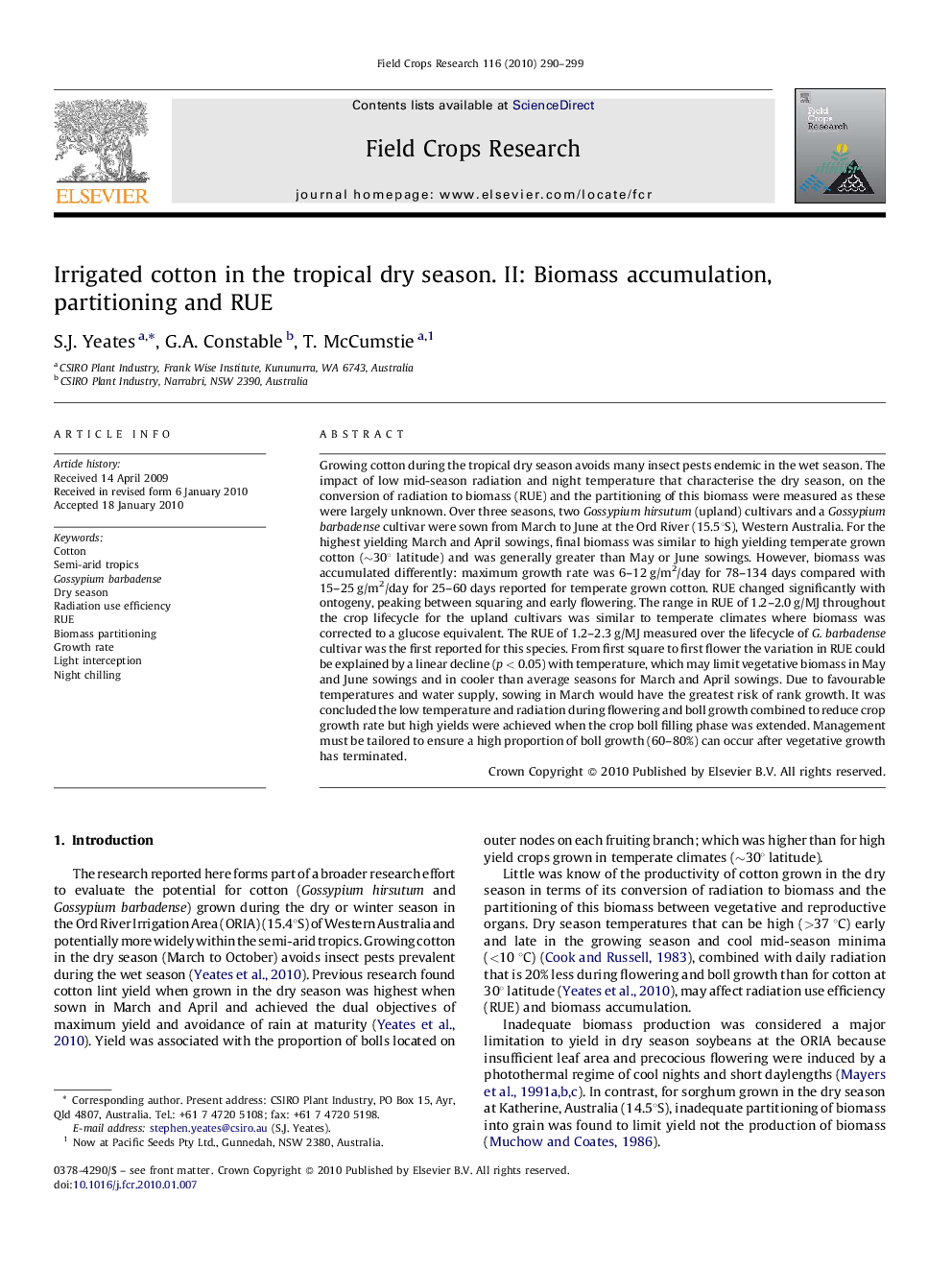| کد مقاله | کد نشریه | سال انتشار | مقاله انگلیسی | نسخه تمام متن |
|---|---|---|---|---|
| 4510929 | 1321882 | 2010 | 10 صفحه PDF | دانلود رایگان |

Growing cotton during the tropical dry season avoids many insect pests endemic in the wet season. The impact of low mid-season radiation and night temperature that characterise the dry season, on the conversion of radiation to biomass (RUE) and the partitioning of this biomass were measured as these were largely unknown. Over three seasons, two Gossypium hirsutum (upland) cultivars and a Gossypium barbadense cultivar were sown from March to June at the Ord River (15.5°S), Western Australia. For the highest yielding March and April sowings, final biomass was similar to high yielding temperate grown cotton (∼30° latitude) and was generally greater than May or June sowings. However, biomass was accumulated differently: maximum growth rate was 6–12 g/m2/day for 78–134 days compared with 15–25 g/m2/day for 25–60 days reported for temperate grown cotton. RUE changed significantly with ontogeny, peaking between squaring and early flowering. The range in RUE of 1.2–2.0 g/MJ throughout the crop lifecycle for the upland cultivars was similar to temperate climates where biomass was corrected to a glucose equivalent. The RUE of 1.2–2.3 g/MJ measured over the lifecycle of G. barbadense cultivar was the first reported for this species. From first square to first flower the variation in RUE could be explained by a linear decline (p < 0.05) with temperature, which may limit vegetative biomass in May and June sowings and in cooler than average seasons for March and April sowings. Due to favourable temperatures and water supply, sowing in March would have the greatest risk of rank growth. It was concluded the low temperature and radiation during flowering and boll growth combined to reduce crop growth rate but high yields were achieved when the crop boll filling phase was extended. Management must be tailored to ensure a high proportion of boll growth (60–80%) can occur after vegetative growth has terminated.
Journal: Field Crops Research - Volume 116, Issue 3, 3 April 2010, Pages 290–299